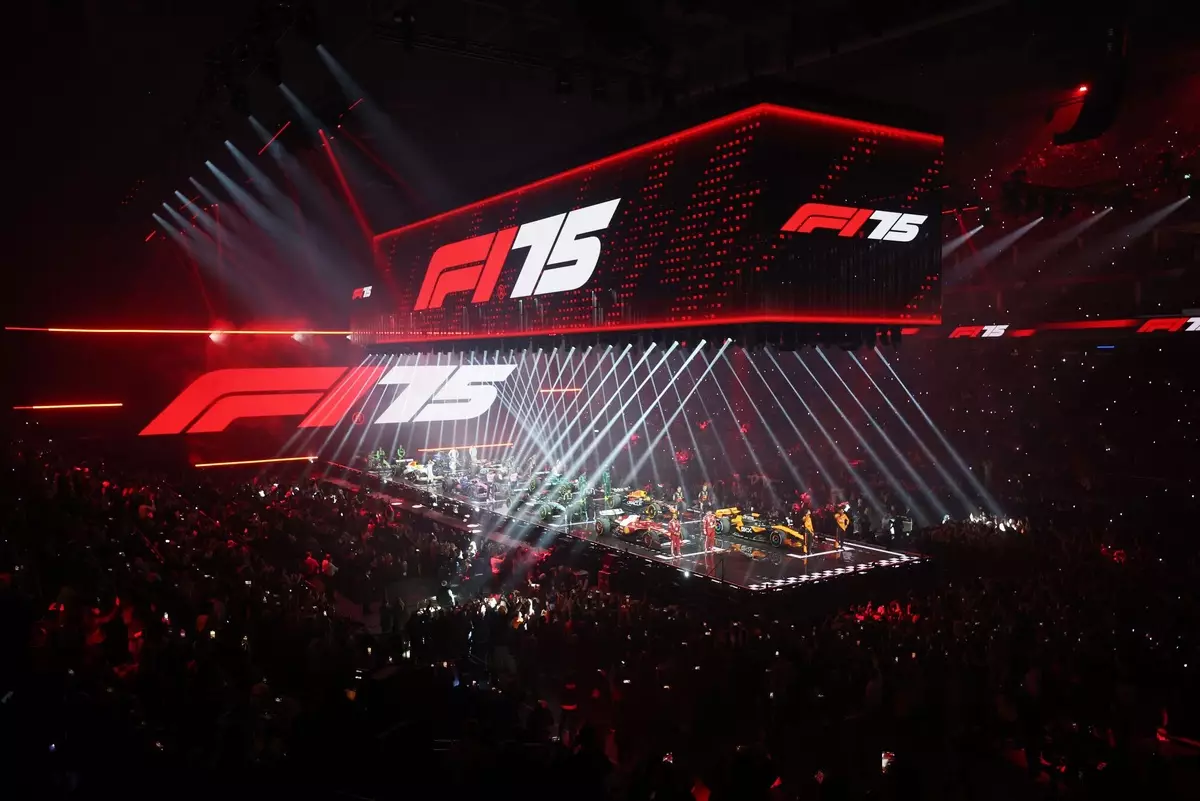Formula 1 has long been known not just for its high-octane racing but also for the glitz and glam that surrounds the sport. This was vividly displayed during the recent F175 livery launch at London’s O2 Arena, which served as a stage for drivers and teams to unveil their cars for the 2025 season. With a mix of fanfare and theatrics, the event had its moments of brilliance and criticism, revealing the delicate balance the sport must maintain between tradition and modernity.
Comedy host Jack Whitehall encapsulated a prevailing sentiment when he remarked about the “groans of purists” amidst the excitement of the event. Indeed, the spectacle was not shy in drawing loud reactions, both positive and negative. The crowd’s enthusiastic cheering for Lewis Hamilton marked him as the evening’s standout, contrasting sharply with the boos directed at Red Bull’s team principal, Christian Horner, and reigning champion Max Verstappen. Yet, it was the mention of the FIA that drew the loudest jeers. This dichotomy of reception illustrates a broader tension within F1; where the event’s entertainment value clashes with the expectations of long-time fans who yearn for the sport’s traditional ethos.
As teams spent considerable sums—Red Bull is rumored to have shelled out around £800,000 for the presentation—critiques emerged regarding the transformation of car launches into extravagant showcases. The notion that these events are siphoning time and resources away from crucial sponsor interactions and driver appearances has ruffled feathers within the teams. Nevertheless, the event was evidently crafted with a younger audience in mind—a demographic unaccustomed to the nuances of traditional F1 launches.
A notable aspect of the launch was its deliberate alignment with showbiz elements. The factor of drama unfolded vividly through Horner’s entrance, met with a theatrical booing that could be compared to that of a pantomime villain. In this modern-age portrayal, he has adopted a villainous persona, shaped in part by the Netflix series “Drive to Survive.” Furthermore, Verstappen experienced the crowd’s ire, foreshadowed by a quip from Whitehall about their previous on-track altercations—the atmosphere elicited not just laughter, but a real connection with the audience.
While some moments fell short of resonating with fans—like missing in-depth discussions surrounding the F1 Academy and other supporting series—the focal point remained clear. The event’s purpose was to captivate and attract new spectators, giving them something to root for, even if not every production choice hit the mark. For instance, McLaren’s nostalgic nod to past victories proved to be affirmative, while Aston Martin’s linking to the James Bond legacy was a clever touch, resonating well with the attendees.
The atmosphere in the O2 Arena painted a picture of a community excited by the sport, but also experiencing its share of rivalry and conflict. The hostile reception for Horner and Verstappen reflected a genuine connection between the drivers and the fans. It suggests that the sport has successfully fostered a narrative of competition that transcends the mechanical aspects of racing. In an age where digital media dominates fan interaction, cultivating a sense of community becomes vital for ensuring the sport’s future.
However, as much as the event was embraced, criticisms arose concerning its execution. Numerous stakeholders felt that some essential elements—like engine fire-ups akin to MotoGP launches—were overlooked, leaving fans wanting more. While such critiques can seem nitpicky, they underscore the importance of blending spectacle with authenticity in a sport rooted in tradition.
Ultimately, the F175 livery launch was a bold venture for Formula 1, channeling a distinctive approach to engage a diversifying fanbase. Despite the potential pitfalls—it was a gamble that paid off. While there will always be areas for improvement, such as incorporating deeper discussions around undercard series or elevating technical presentations, the event showcased the sport’s evolving nature and ability to attract a broader audience.
It remains to be seen how F1 will innovate further, but this event undeniably lays a foundation for future launches that blend entertainment with the sport’s competitive spirit. For now, the mixed reactions present an opportunity for F1 to reflect, adapt, and ultimately grow while remaining true to its roots. The pursuit of capturing a modern audience while retaining its loyal following may not be easy, but with events like this, Formula 1 has taken significant strides in the right direction.


Leave a Reply